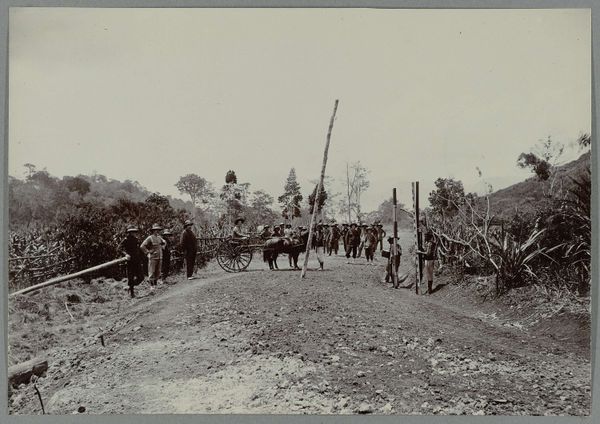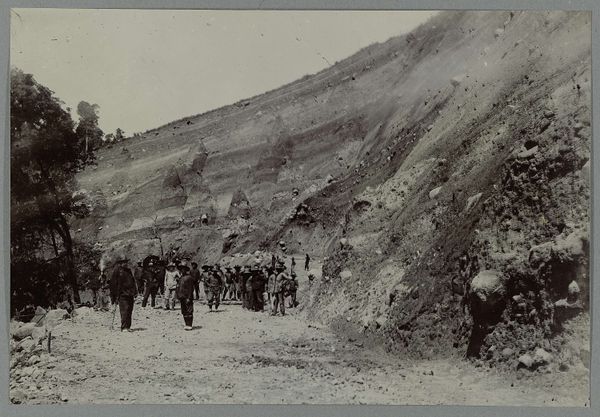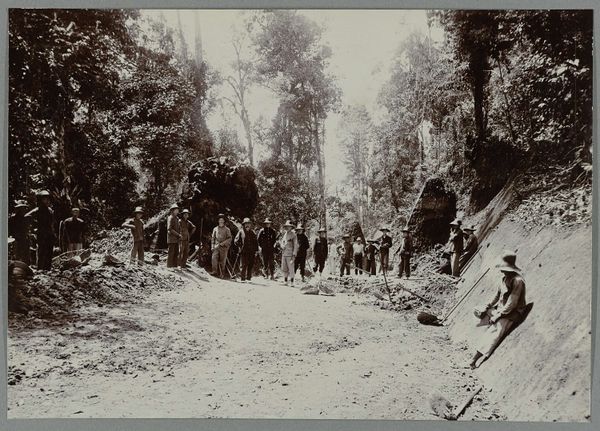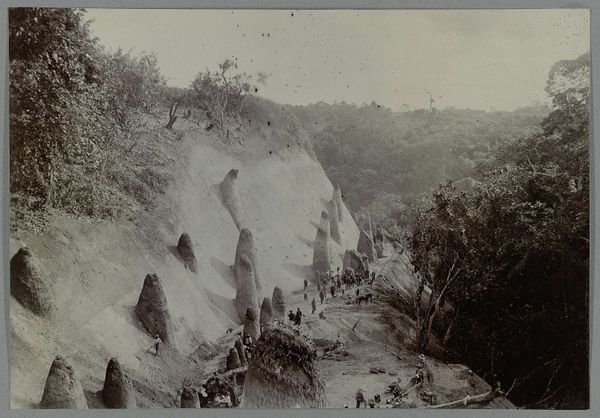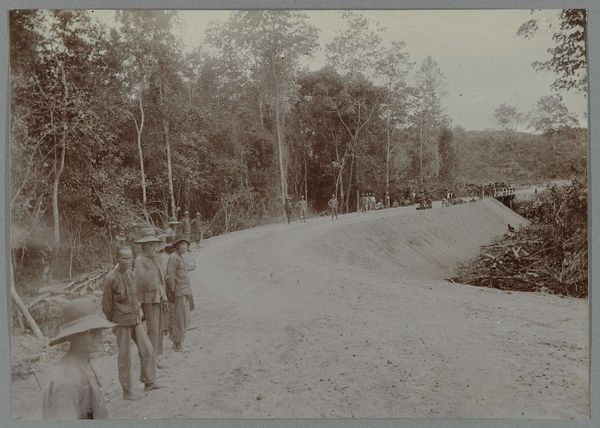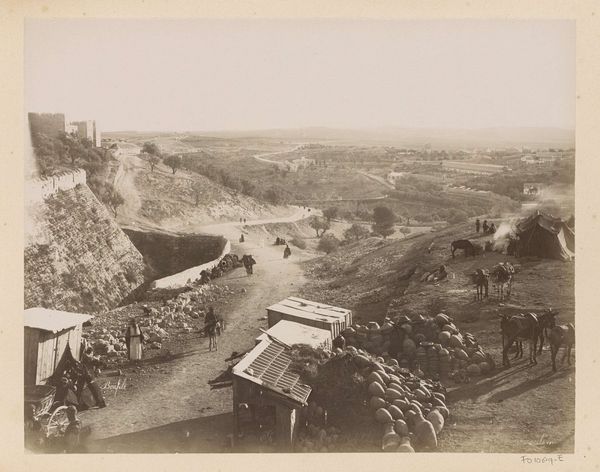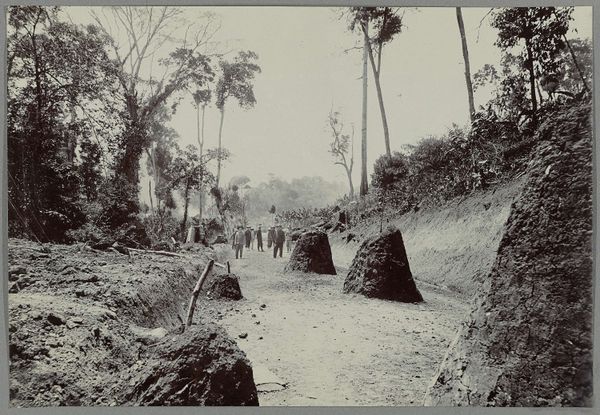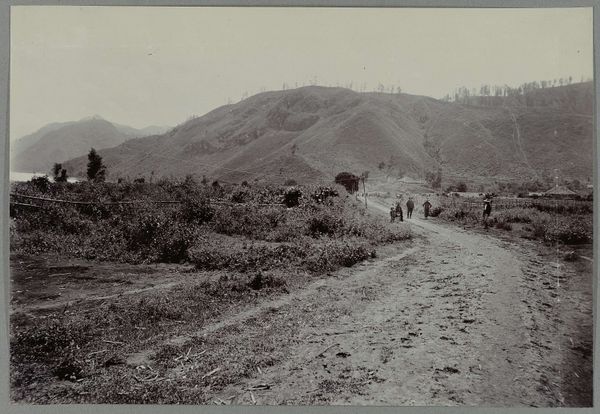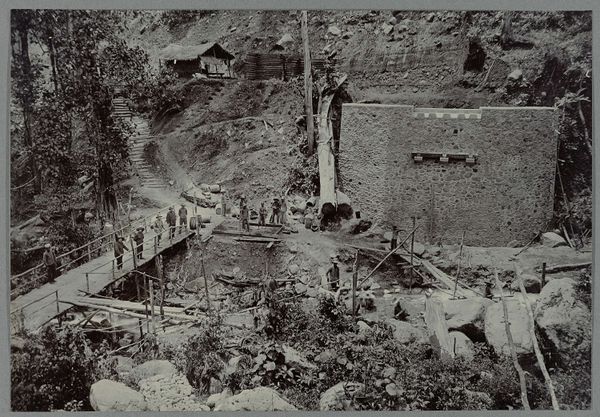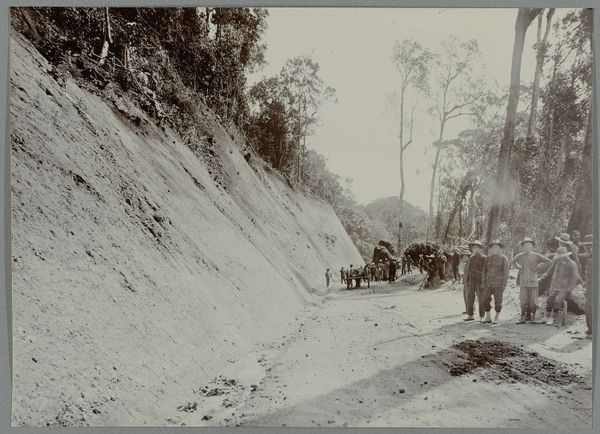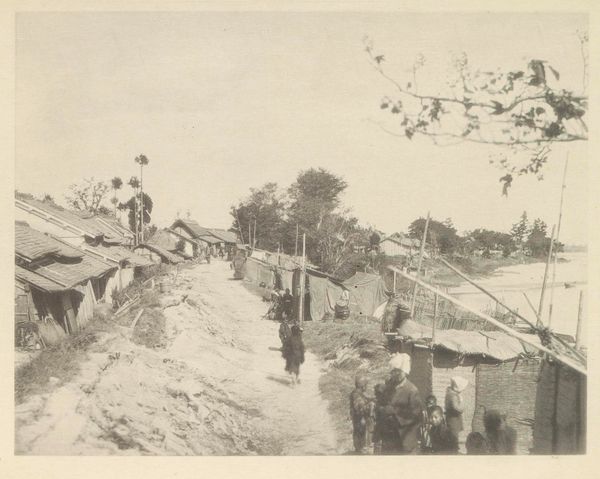
plein-air, photography
#
plein-air
#
landscape
#
photography
#
realism
Dimensions: height 138 mm, width 200 mm
Copyright: Rijks Museum: Open Domain
Curator: What an evocative image. This is a photograph titled "Voltooide brug over de Wenih Rongka," placing its creation somewhere between 1903 and 1913. It looks like a documentary style shot, maybe even taken en plein air. What's your initial read on this, Editor? Editor: It has a certain austere beauty. The landscape is lush but the overall tone feels... heavy, burdened somehow. Is that the implication of colonial exploitation in the Dutch East Indies seeping through? I sense the weight of human labor in those details. Curator: Absolutely, there’s a clear relationship between landscape and labor being depicted. It shows the newly completed bridge with several locals seemingly posing on and around it, along with some horse-drawn carriages. It looks to be taken in a realist style. It provides what at first seems to be a very casual depiction, until you think of all the labor of locals under colonial rule that produced such change on the natural environment. Editor: Precisely! I'm drawn to the positioning of the subjects. There's a certain...stiffness. It's as if they are objects within the landscape, perhaps signaling the impact of external governance on the daily lives and bodies of the people present. Curator: A good point, I find myself drawn to how it visualizes the intersection of progress and power, the ways in which infrastructure projects like these bridges were intrinsically tied to asserting dominance over both the environment and the local population. It also poses questions about perspective. We need to interrogate whose story we are seeing through the lens, what narratives it perpetuates. Editor: Right. This photo invites contemplation regarding the photographic gaze and how images were employed as tools in shaping public opinion about colonialism. The bridge is the center point, but this highlights themes of social, political, and cultural impacts on how communities were depicted during this time. Curator: The photograph, far from being a neutral record, is thus a stage where power dynamics play out visually. Considering the identity of the photographer is crucial for further interpretations, especially in dissecting any inherent biases embedded within the shot. Editor: It certainly pushes me to think about the complex interplay between the human element and environment, and colonial powers in a still, captured moment. Curator: Agreed, a deceivingly still snapshot that screams for active interrogation.
Comments
No comments
Be the first to comment and join the conversation on the ultimate creative platform.
